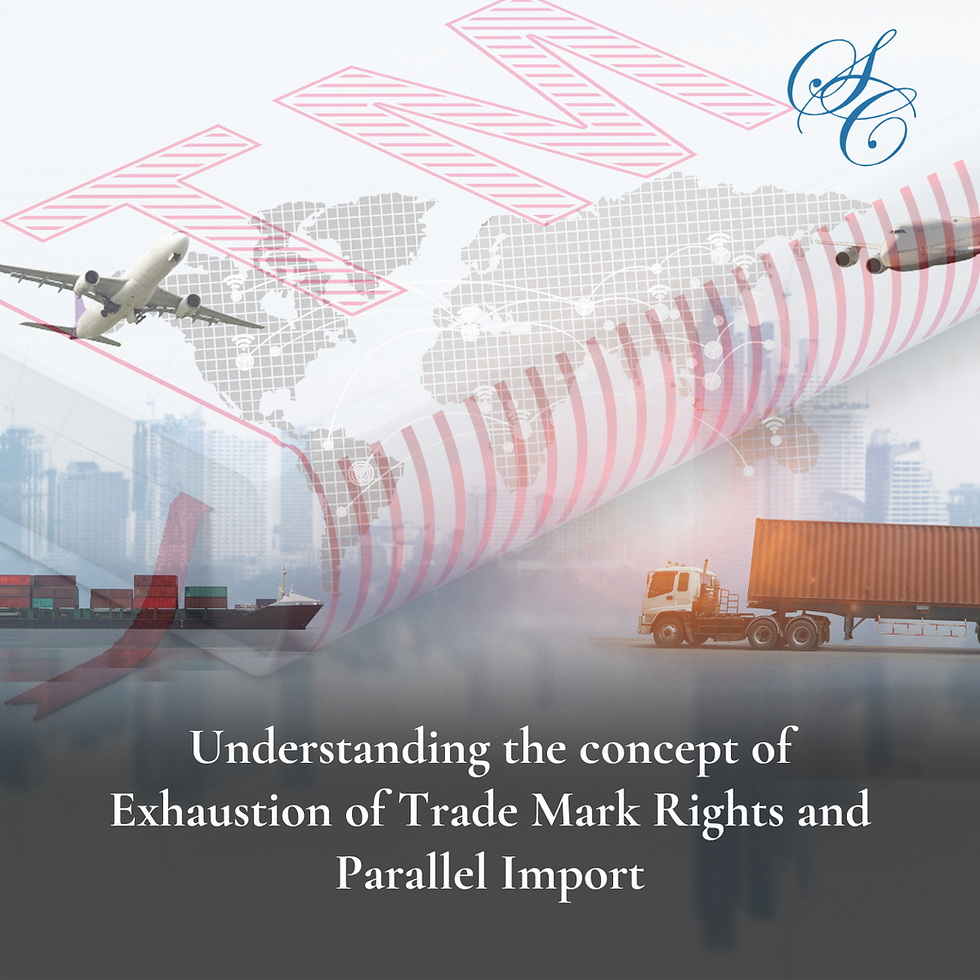Recent Changes in Product Packaging and Listing Requirements in India
- Sarwajeet Singh
- Jul 6, 2020
- 2 min read
Our Associate, Madhurima Gadre discusses “Recent Changes in Product Packaging and Listing Requirements in India”
The ongoing COVID-19 pandemic has gravely affected countries across the world, including India. In an effort to boost India’s struggling economy in light of the pandemic, the Hon’ble Prime Minister recently, in a speech, stressed on the importance of “Aatmanirbhar Bharat (self-reliant India)” and urged the public to go “Vocal for Local”.[1] One of the key challenges in attaining this goal has been enabling consumers to distinguish between products of Indian and foreign origin.
In a recently issued press release, the Ministry of Commerce and Industry stated that the Government e-Marketplace (GeM) has made it mandatory for sellers to enter the country of origin while registering all new products on GeM. Further, the sellers who have already uploaded their products before the introduction of this new feature on GeM, are being regularly reminded to update the country of origin, along with a warning that their products shall be removed from GeM if they fail to make the update. In addition, GeM has also enabled a provision for indication of the percentage of local content in products. With these changes, the country of origin as well as the local content percentage is visible in the marketplace for all the items.[2] Furthermore, an e-commerce website, namely, www.shopclues.com, went a step further and added a separate Aatmanirbhar cum “Made In India” section in order to enable consumers to exclusively view and choose between products of Indian origin.[3]
In this regard, it is pertinent to mention the Legal Metrology (Packaged Commodities) Rules, 2011, which regulate pre-packaged commodities and, inter alia, mandate certain labelling requirements prior to sale of such commodities in India. These rules underwent substantial amendments in 2017. One such amendment directs that the name of the country of origin or manufacture or assembly in case of imported products shall be mentioned on the package.[4] Before the amendment in 2017, in case of imported commodities, only the name and address of the importer was required to be mentioned. Although the amended rules apply to e-commerce websites, a Public Interest Litigation (PIL) has recently been filed in the Delhi High Court seeking a direction that e-commerce websites display a “Made In India” option separately and conspicuously for consumers. The PIL states that while some e-commerce websites are mentioning the products’ country of origin, the same is being done in a discreet manner which is not easily searchable by the consumers at large. A Division Bench of the Delhi High Court has, last week, issued notices to the Ministry of Commerce and Industry as well as to various e-commerce websites, such as Amazon, Flipkart and Snapdeal, seeking their stand on the PIL by July 22, 2020.[5]
It remains to be seen how the above-noted e-commerce websites react to the PIL and whether they create a separate “Made In India” section in order to enable consumers to make informed decisions, including supporting local businesses or refraining to buy products originating from any specific country!
[1] Excerpts of the speech available at https://www.youtube.com/watch?v=dPMpu8yxm4A and https://www.youtube.com/watch?v=0xmx92Q_kQ4
[2] Copy of the press release available at https://pib.gov.in/PressReleasePage.aspx?PRID=1633511
[3] The Aatmanirbhar cum Made In India section can be accessed at https://www.shopclues.com/shopclues-sale-2.html
[4] Copy of the Legal Metrology (Packaged Commodities) Amendment Rules, 2017 available at http://metrologycentreindia.com/codes/pc2017.pdf
[5] Copy of the notice available at http://delhihighcourt.nic.in/dhcqrydisp_o.asp?pn=86372&yr=2020




Comments